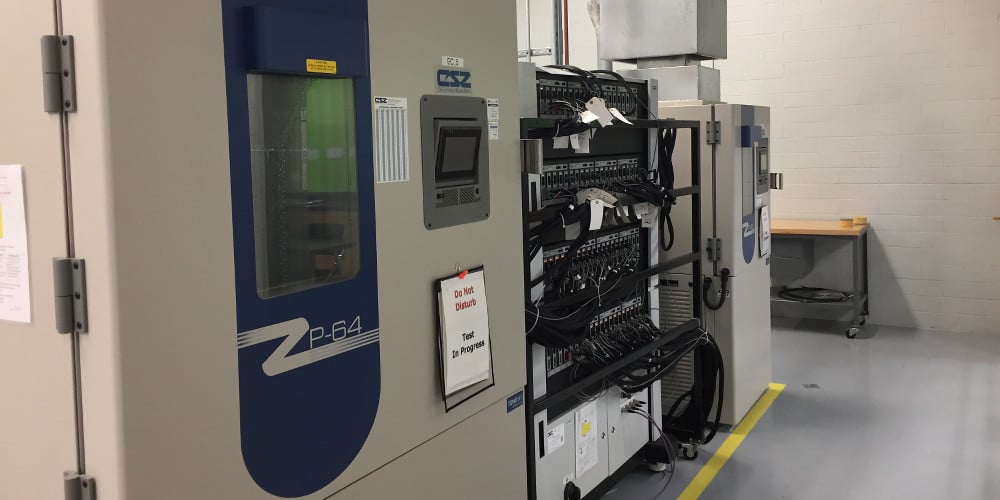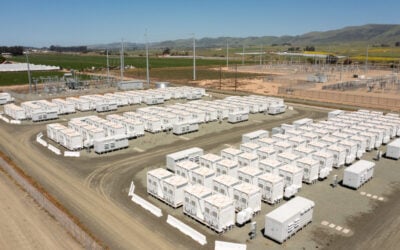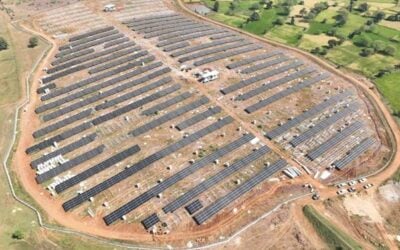
Testing and accreditation group DNV has added new capabilities to assess thermal runaway behaviour in battery cells to the testing laboratory it manages in Rochester, New York.
DNV said yesterday that it has added a Battery Cell Burn and Abuse Test facility at the Battery and Energy Storage Technology (BEST) Test and Commercialisation Center, which is owned by the New York Battery and Energy Storage Technology Consortium (NY-BEST).
Enjoy 12 months of exclusive analysis
- Regular insight and analysis of the industry’s biggest developments
- In-depth interviews with the industry’s leading figures
- Annual digital subscription to the PV Tech Power journal
- Discounts on Solar Media’s portfolio of events, in-person and virtual
NY-BEST is a combination industry trade association and technology advancement group which was established in 2010. In addition to market leadership activities like advocating for laws, regulations and policies to support the energy storage sector in and out of New York, the group’s activities include offering testing and commercialisation services, supporting prototyping and promoting R&D collaboration and knowledge-sharing.
The new Burn and Abuse facility is a controlled and safe test environment for testing battery cells’ thermal runaway behaviour. It can put cells through their paces in the extreme conditions that can cause thermal runaway, a major cause of the rare fires that lithium-ion battery storage equipment can experience.
Overheating, nail penetration and electrical abuse that causes short circuits are among these conditions and DNV said its testing provides insight into cell safety as well as what happens when thermal runaway occurs: the gases that are released in these events and what their flammability and composition is.
The centre can perform customisable tests with a fast turnaround, including UL9540A burn tests. This and other tests can be used to verify that products are safe to go out into the field, or alternatively troubleshoot during product development to make cells more fire- and explosion-safe.
The facility is accredited to ISO 17025 standard for testing and calibration laboratories and several million hours of battery testing have been logged since it opened in 2014, offering other services such as life cycle tests, solar-plus-storage system tests, warranty evaluations, performance measurements and modelling of new applications, modelling of grid-connected storage applications and more.
DNV energy systems North America regional president Richard S. Barnes said that with the wide deployment of battery storage systems a “lynchpin of the energy transition,” it will become more and more important to ensure battery safety as systems are deployed in increasing numbers of homes, businesses and cars.
DNV claims its lab can test cells up to 300Ah, larger than what is possible at many other test facilities. It said that utility Arizona Public Services (APS) has become one of its first customers, conducting thermal runaway testing and gas and flammability analysis on cells which will be used in 663MWh of battery storage installations in its service area.
APS hit industry headlines in 2019 when its McMicken grid-scale battery energy storage system (BESS) facility caused a fire and explosion which injured four fire service personnel. A subsequent technical report into that incident prepared by DNV pinpointed the root cause as an internal defect in a battery cell causing it to go into thermal runaway in an enclosed space.
Many industry best practises have since been updated as a result of that report. Fires remain rare and there have been no injuries reported in the handful that have occurred at grid-scale storage facilities since the McMicken incident, but many industry sources have commented that any that do occur can damage confidence in energy storage and any that prove fatal could put the brakes on deployment in many areas.
“The excellent test capabilities and the quality of the personnel at DNV provided us with high confidence in the results. These tests serve as important input to ensure the safety of our BESS installations,” APS energy innovation advisor Daniel Clark said of the new facility.
“It has been great working with DNV, not just the BEST Test Center folks conducting the testing, but also with the DNV Advisory staff that has supported us in developing our safety standards and executing reviews of safety design, explosion and flammability studies.”






